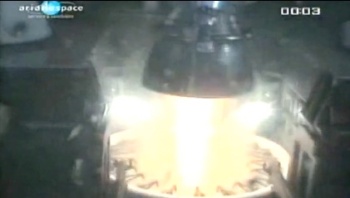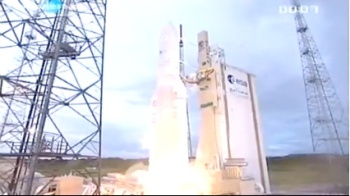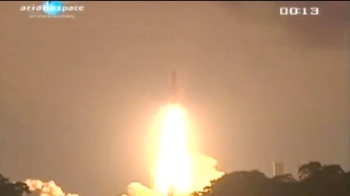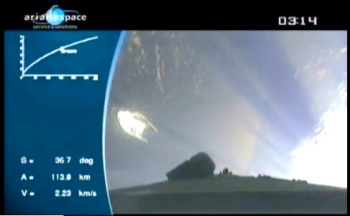|
The first launch was scheduled for 2:41 PM Phoenix time (21:41 UTC) on Wednesday, 23 June 2010. It was scrubbed due to a pressure drop in a tank in the first stage.
A second was scheduled for Thursday, 24 June, beginning at 2:41 PM Phoenix time. The countdown reached T-17 seconds, when a hold occurred. The count was recycled to T-7 minutes, while systems were checked. An hour passed and the count resumed, only to reach T-16 seconds when another hold occurred. That scrubbed the launch, as the window expired. The problem involved pressurization in the first stage.
The third launch attempt was then scheduled for Saturday, again at 2:41 PM Phoenix time. This time, everything went well. Two satellites were successfully launched:
- Arabsat-5A weighed 4,939 kg. at launch. It was built by Astrium and Thales Alenia Space within the scope of a turnkey contract with satcom operator Arabsat, based in Riyadh, Saudi Arabia. Astrium provided the Eurostar E3000 platform and was responsible for satellite integration, while Thales Alenia Space supplied the payload. Arabsat-5A will provide telecommunications and TV broadcasting services in the Middle East and North Africa. Positioned at 30.5 degrees East, it has a design life exceeding 15 years.
- COMS, the Communication, Ocean and Meteorological Satellite, weighed 2,460 kg. at launch and is fitted with three payloads. In addition to its meteorological observation and ocean surveillance missions, its orbital position over the Korean peninsula will enable it to provide broadband multimedia communications services. Program prime contractor Astrium built COMS under co-operative efforts with Korea Aerospace Research Institute (KARI) using a Eurostar E3000 platform, fitted with a meteorological imaging system and an ocean observation payload. The Ka-Band telecommunication payload was developed by Electronics and Telecommunications Research Institute (ETRI) in Korea and was supplied by the Korea Aerospace Research Institute (KARI).
Yonhap News reports that the Communication, Ocean and Meteorological Satellite (COMS) represents Korea’s first Geo Stationary Orbit (GSO) weather satellite. At a cost of nearly $300 Million, the satellite required eight years for design and construction.
|





